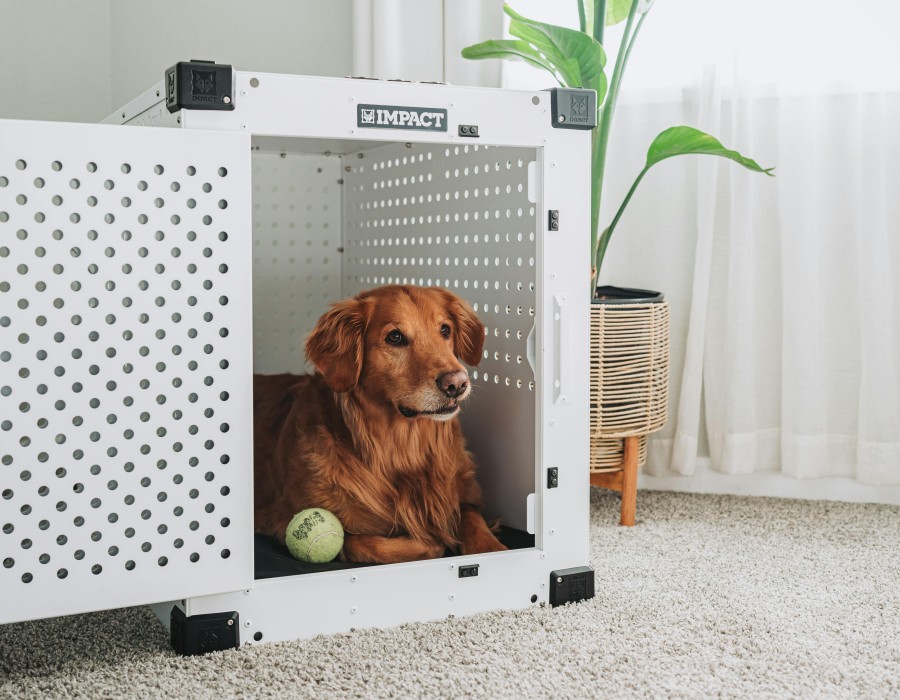Dogs are very devoted and loving companions, but they can exhibit some behavioral issues that can be upsetting for their owners. If left unaddressed early on, these problems might become more major problems in the bond between a dog and its owner. Many of these issues, meanwhile, can be resolved at home with patience, empathy, and a small amount of work. Five typical dog behavior issues will be discussed in this article, together with doable advice on how to fix them at home without consulting a professional.
1. Excessive Barking
The most common behavioral problem in dogs is excessive barking. Barking is a natural way for dogs to communicate, but it can become problematic when it occurs too frequently or in inappropriate situations. A dog can bark excessively for several reasons, including boredom, anxiety, fear, or even attention-seeking behavior. Dogs occasionally bark excessively in response to specific stimuli such as strangers, other animals, or loud noises.
Starting with providing their dog with more mental and physical stimulation, owners can help to resolve this issue at home. Regular playfulness and exercise can help alleviate boredom, which is often the root cause of excessive barking. Furthermore, creating a neat and ordered environment can help reduce stress. Assume the barking is triggered by certain stimuli, such as the sound of the doorbell or visitors approaching the house.
2. Chewing on Furniture and Belongings
Dogs, particularly puppies, have an innate desire to chew on objects. A dog might become a serious problem if it starts chewing furniture, shoes, or other household items. Teething, boredom, or a lack of chewing surfaces are common causes of this behavior. Certain canines can also chew to relieve anxiety or tension.
Giving the dog appropriate chewing toys that match its natural chewing demand will assist to resolve this issue at home. Durable chew toys make excellent alternatives for home items and can keep a dog entertained when left alone. Setting up a plan for the dog that includes frequent play, and exercise also helps to prevent boredom. When a dog chews due to stress or worry, owners can focus on desensitizing their pet to stimuli and implementing soothing measures, such as providing their dog with a safe space when left alone.
3. Jumping on People
Jumping on people is another common behavioral issue, particularly in puppies and young dogs. Although a dog jumping to meet its owner can be adorable, it can soon become dangerous, especially if the dog leaps on visitors, youngsters, or strangers. Particularly for people who are not used to socializing with dogs, this behavior can be awkward or even harmful.
Teaching the dog alternate behaviors more suitable will help to solve jumping. Teaching the dog to sit when meeting visitors will help it to focus on its excitement. The dog will learn that sitting quietly is more desired than jumping by being rewarded for this behavior. Using positive reinforcement and regular commands, owners can also help their dogs to be calm in many circumstances. Should the dog keep jumping, it is imperative to overlook the behavior and refrain from interacting with the dog until it calms down. This teaches the dog that attention does not follow from jumping. One can fix this behavior at home with consistency and patience.
4. Separation Anxiety
Separation anxiety is prevalent in dogs, especially those with a strong attachment to their owners. Every time their owner departs, dogs experiencing separation anxiety can act destructively like chewing, barking, or urinating within the house. For both the dog and its owner, this disorder can be upsetting since it usually causes mental discomfort for the pet and major damage to property.
Solving separation anxiety requires progressively desensitizing the dog to be alone. Starting with brief periods of alone for the dog, owners can progressively extend the time over time. When leaving and coming home, keep your cool since overblown greets or goodbyes can cause the dog to become anxious. When left alone, the dog can feel more secure if a specific safe place such as a crate or a quiet room is created. Giving interactive toys or puzzle feeders will also keep the dog busy and assist in diverting it while the owner is away. Consult specialist for home dog training which is essential for many owners to guarantee their dog's good conduct and emotional well-being. While seeing a veterinarian or professional dog trainer can be advised in cases of extreme separation anxiety, many dogs can benefit from home training methods.
5. Potty Training Issues
Potty training is one of the first obstacles that new dog owners face. While some dogs pick where to go to the restroom right away, others could find consistency difficult. Though they can be annoying, potty-training problems usually stem from uncertainty, a lack of routine, or medical conditions. While older dogs can also resort to inappropriate elimination if they are not adequately trained or if they are suffering stress or health issues, puppies are more likely to have mishaps in the house.
Establishing a steady schedule and giving the dog precise directions will help with potty training problems. Frequent outdoor walks for the dog help to reinforce where it should go to the restroom, especially following meals, nap time, or play periods. Reinforcing good conduct depends on praise and rewards for eradicating extraneous sources.
Conclusion
Dealing with typical dog behavior problems at home calls for both consistency and patience, as well as a dedication to the dog's demands. Whether handling extreme barking, chewing, jumping, separation anxiety, or toilet training difficulties, owners can address these issues with the appropriate method. Key elements of effective behavior modification are positive reinforcement, schedule, and open communication. Most dog behavior issues can be resolved with time and effort, therefore strengthening the link between owner and dog and producing a contented and well-mannered friend.





Comments